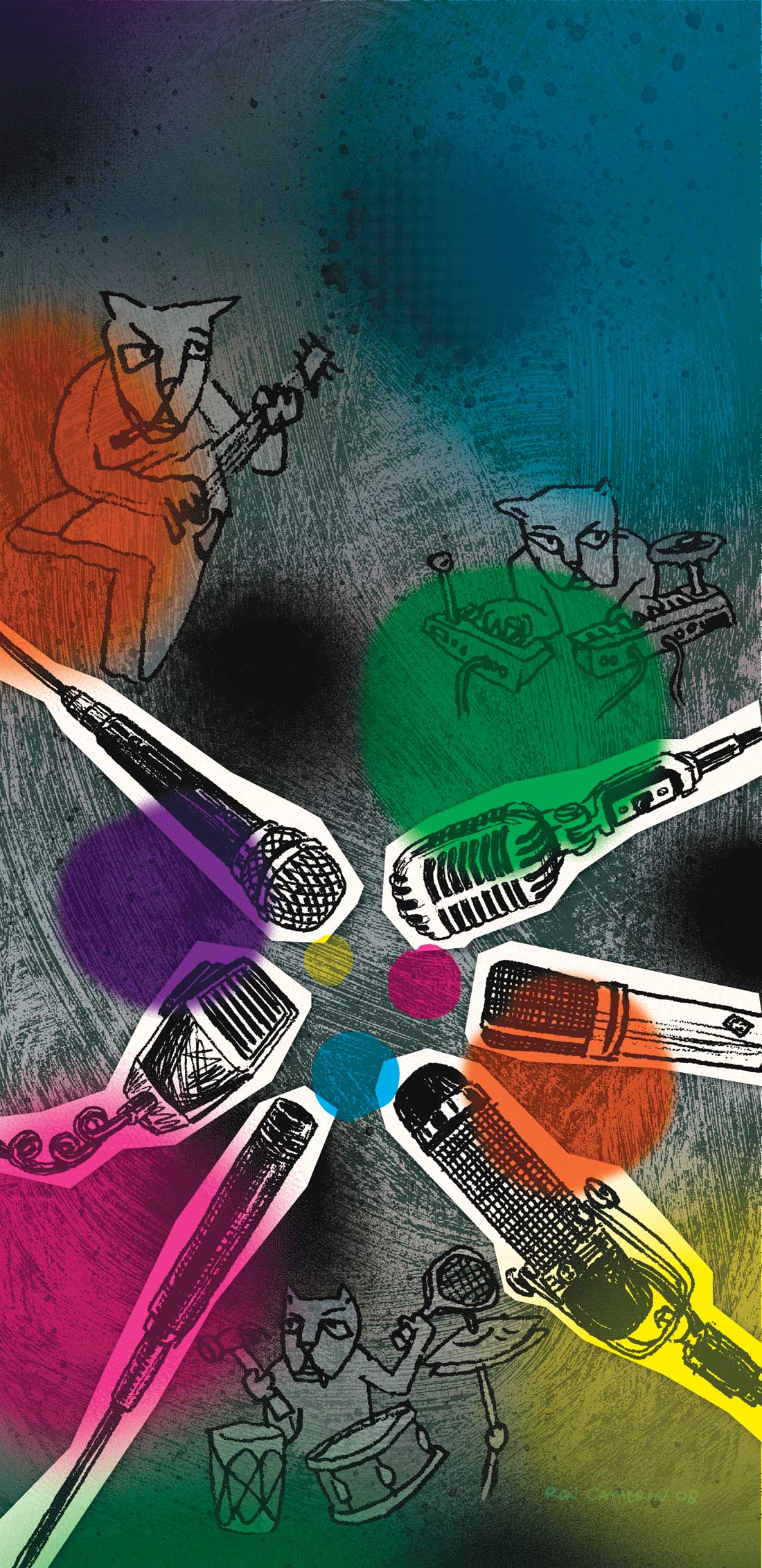Schwa/Stillwell are a cool plug-in company. I'm going to start writing about one of their utilities to help our readers ease into this product line. Simply put, the titles you'll find at stillwellaudio.com look amazing, sound even better, and are much more original than the recent deluge of reissue bundles. Case in point, the schOPE audio tool is one of the best analyzers I've used in a long time.
schOPE is really a multitool/multiview, multichannel waveform, frequency, signal, and channel phase analyzer. More better (proper grammar is dismissed during moments of geek excitement), schOPE lets you superimpose and view multiple audio signals from every dimension. You have to use it to appreciate how valuable it can be. In mixing situations, you can load both the bass guitar and kick drum to observe frequency overlapping. Many mixing tasks could benefit from this power; analyze reverb tails, compare pre and post-compression effects to see what you're doing to your dynamics-the list goes on and on. Users with well-tuned ears will appreciate how much schOPE can speed up your workflow, while "newer" engineers can use the visual display to test hunches they have about problem frequencies, using compression, and managing dynamic range. I believe that having visual feedback for audio decisions can help sharpen engineering skills faster than tweaking audio alone.
From a mastering standpoint, I can't say enough about the frequency analyzer. The main reason is that each axis (amplitude and frequency) has a zoom control that lets you focus on problem areas. I found this exceedingly useful for catching super lows in the 20 Hz area or high-end artifacts at 18 kHz and beyond. The second advantage of schOPE is that almost every parameter can be adjusted, including FFT size. While it might seem logical to choose the highest FFT value available, it's not this simple. Choosing an FFT size has tradeoffs. If too low a value is chosen, the analysis will be very general and could fail to provide the detail you may require. Conversely, increasing the FFT size makes it difficult for the display to update quickly, turning the display into a bubbling sonic stew of sorts. Having a significant delay between the moment the audio is heard and when its frequency graph is displayed can make your job difficult. My approach is to choose a low value, such as 1024 points, for zooming in on target areas, and a larger value, like 8192, when observing the 20 Hz to 20 kHz landscape.
Stillwell and Schwa titles work on both Mac and PC using VST or AU formats. Many titles have dedicated REAPER licenses, too. The "Reaper Special" version of schOPE has additional host-specific features, such as waveform-display scrubbing and pause/play from the within the plug-in. The best part is that the demo versions are completely uncrippled; heaven bless them, but they're going on the honor system. If you find you're using the application, the good news is that the pricing is from reasonable to down-right-low. Run over to their website and check out these gems. And stay tuned for more reviews in coming issues. ($25 download; www.stillwellaudio.com)
Tape Op is a bi-monthly magazine devoted to the art of record making.




_disp_horizontal_bw.jpg)